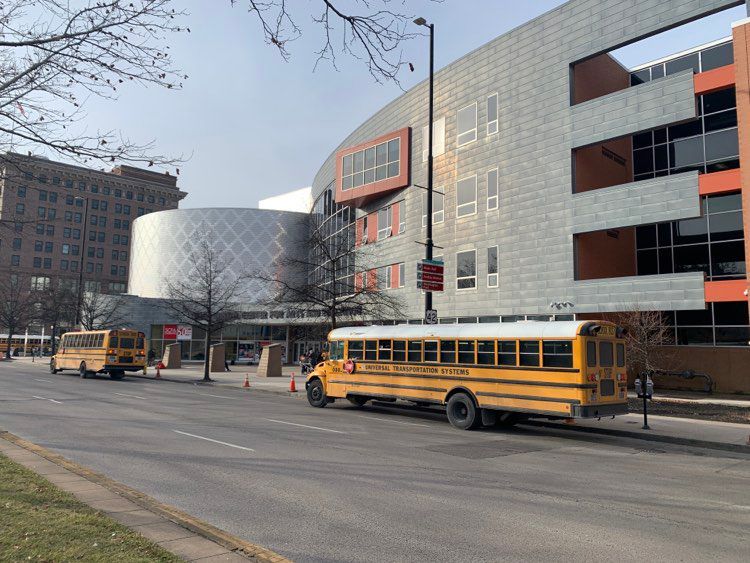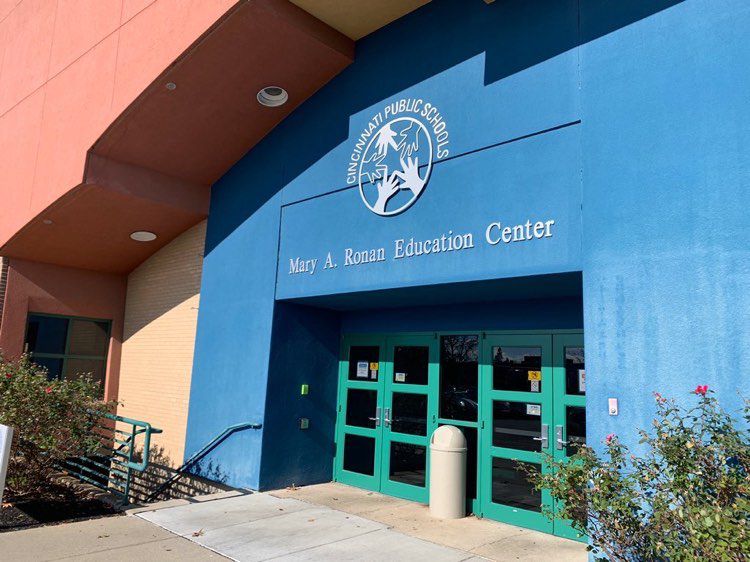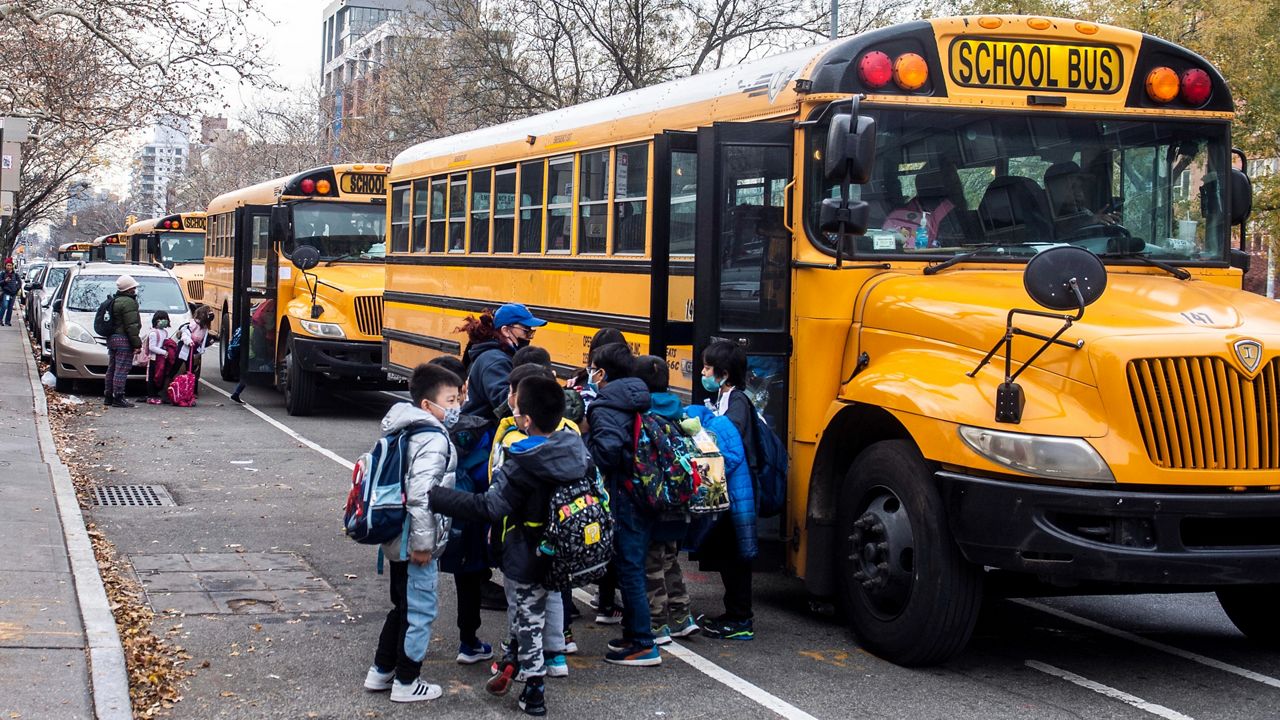CINCINNATI — Most public schools in Cincinnati will have new start and dismissal times for the 2023-2024 school year because of a shortage of bus drivers.
The vast majority of the changes are by only a few minutes, but for some, the new policy could affect the start and end of the school day by as much as an hour and 20 minutes.
What You Need To Know
- Cincinnati Public Schools will adjust start and dismissal hours for most of its schools next year because of busing issues
- A driver shortage has made it difficult for CPS yellow bus providers to drop off students at school on time
- The district views the plan as the least disruptive option, but acknowledged there were no perfect solutions
Cincinnati Public Schools (CPS) announced the plan Tuesday evening. Ohio’s second-largest school district described it as a paired, two-tier model that creates a 70-minute window to let bus drivers drop off students at one school and then move on to another route.
These new times are paired at 7:40 a.m. and 8:50 a.m., and 8 a.m. and 9:10 a.m.
Because of the changes, 11 CPS schools will have their start and dismissal times move by at least 15 minutes. The bulk range from 25 to 45 minutes, but a few are a bit longer than that.
The Academy of Multilingual Immersion, for example, is going from a 9:15 a.m. start time to an 8:50 a.m. opening bell. Classes at Hughes STEM High School will now start 8 a.m. rather than 8:45 a.m.
Start times at two schools — Gamble Montessori Elementary and Taft Elementary — are moving by more than an hour.
In total, 53 of CPS’ 67 schools will have a new schedule of some sort next year. The full list is on the CPS website.
"Our priority is to create better outcomes for our students, and they must be at school for that to happen," said CPS Superintendent Iranetta Rayborn Wright.
"We understand the concern from three schools where times must change by more than 45 minutes, but recognize the necessity of all our students arriving to school on time," she added. "We will continue to work with staff and families to minimize challenges."
How we got here
There’s a simple reason for the changes, according to Wright. There aren’t enough bus drivers to get kids to and from school.
Based on current routes, and looking at forecasts for next fall, the district has 36 more routes than drivers available, Wright said in a statement. The shortage is causing route stacking this year, leading some students getting to school late in the morning and home in the afternoon.
The Cincinnati Board of Education requires the district to offer bus services to students who live at least 1 mile from their neighborhood school.
State law also requires the district to provide transportation services to some non-CPS schools. As part of the new plan, the district is also recommending some of those schools adopt new start times.
Wright described the district as needing to reduce the number of routes to improve “efficiency, safety, on-time status and level of service for families.”
The busing situation has been an ongoing challenge for Cincinnati students throughout the year.
As of November, only about 80% of CPS students who take a bus were arriving on time every day, Wright said during a roundtable discussion on the topic. And that was a drastic improvement from the success rate the district had to start the school year.
On-time arrivals in August were closer to 35%.
The goal for large urban districts is between 95% and 98%, Wright said.
Bigger than just needing to wake up earlier
The School of Creative and Performing Arts (SCPA) was among the CPS sites most severely affected by busing issues early in the year, per district data. SCPA has students from kindergarten through 12th grade.
Both of Patty Lee’s teenagers attend high school at SCPA. Hours for high school students are changing from 8:30 a.m. – 2:59 p.m. to 8:50 a.m. – 3:20 p.m. Start times for students in kindergarten through eighth grade are changing by five minutes.
Lee and her husband’s biggest concern about the changes is the potential impact on students’ after-school commitments, like jobs, athletics and other extracurriculars. Her children have several commitments right now that start at 4 p.m. Some of those events — sports and part-time jobs — can take an hour or more to get to by car during rush hour, Lee said. The trip from the downtown performing art school is even longer by bus. When travel gets factored in, the new end time will make it nearly impossible for them to maintain those activities, Lee added.

Lee and her husband also have jobs of their own to take into consideration.
“We’re already doing homework and having dinner late in the evening. This pushes that even later,” she added.
Lee knows transportation has been incredibly spotty for certain groups, but she doesn’t feel like they’ve been engaged in finding a solution as a CPS community.
The school administration held community meetings and issued surveys for parents. It talked to transportation consultants, bus contractors and school leadership to come up with solutions, CPS wrote in a statement as well. But Lee feels the district relied too heavily on surveys and subject matters. She feels they CPS could have done more talking to parents.
Had they dug a little deeper, Lee said she believes CPS could have developed more hyper-focused solutions. For instance, as a parent at SCPA, Lee said she feels she’s seen that the biggest issue at the school is the transportation gap for seventh and eighth-grade students.
CPS students in seventh and eighth grades have the option to take either a third-party yellow bus or a Metro bus. High school students take Metro buses, which have been more reliable this year.
“I didn’t even know school start times were on the table as an option to solve transportation-related issues,” Lee said.
Sarah Strickland’s daughter, Riley, attends SCPA. Riley wasn’t affected by the busing issues because they live close enough where she could either walk there or get dropped off on her mother’s way to work.
Still, many other SCPA families aren’t as lucky, she said. The performance arts school attracts students from all over Cincinnati, so busing is something many SCPA families rely on.
The later start time means the mother-daughter will need to make some lifestyle changes as a family, Strickland admitted. But she doesn’t mind doing that if it means fewer students must show up at school late every day.
“Missing first bell because of a delayed bus hurts the students the most,” she added.
‘Least disruptive’ option on the table
The district discussed multiple solutions to streamline bus routes while maintaining healthy start times for high schools and providing transportation to eligible students, per the CPS statement.
Wright first presented the information to the Board of Education during the Committee of the Whole Meeting on April 19. The CPS administration again shared the information during the Board of Education Business Meeting on Monday.
“In many ways our hands are tied,” said Mike Moroski, a member of the Cincinnati Board of Education. “We elected to go with the least disruptive option; knowing that it will be disruptive regardless.”
Julie Sellers, president of the Cincinnati Federation of Teachers, said she understands the difficult situation the district faces. She called the busing situation this year a “nightmare” for many CPS families.

Though she understands moves needed to be made, she’s not sure this one was the best approach. She referred to the staggered start times as having a “drastic and potentially harmful” impact on students, families, and even staff.
She believes it has the potential to impact before and after-school programming for students. It’s also potentially detrimental to teachers and other school staff. Many will have to come to school an hour early or stay an hour late every day.
That could affect not only school coaches who also teach, but it could also affect a lot of staff members who have families or work second jobs. She noted that a lot of support staff — paraprofessionals, security, lunchroom workers, etc. — go to a second job after finishing up their school duties.
“There’s going to be repercussions,” she said. “You can’t just say we’re changing the schedule and think that everybody can adjust to that. It’s not that easy.”
One of the biggest issues to Sellers is how late in the school year, the plan developed. Sellers hopes the district is amenable to changes to the plan before the start of the upcoming school year.
“It was a difficult decision, but we are committed to making this new system work for families,” Moroski said.



